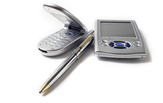 If you’re a job seeker, you probably breathe a sigh of relief when you finish your first interview. After all the resume crafting, researching and rehearsing answers, you’ve survived time in the hot seat.
If you’re a job seeker, you probably breathe a sigh of relief when you finish your first interview. After all the resume crafting, researching and rehearsing answers, you’ve survived time in the hot seat.
Although you may feel the process is now out of your hands, there are still steps you can take to increase your chances of getting the offer.
Don’t leave until you ask for the job
Once the conversation has wrapped up, there are no rules against simply saying to the interviewer something like, “I think my decade of experience in the industry coupled with my relationship-building skills would make me a good match for the position. I would very much like to work for your firm. When could I expect to hear from you?” It’s unlikely you’ll be hired on the spot, but this at least prompts the interviewer to let you know where you stand. The most common reply is “Well, I have several people to speak with, but we’ll definitely let you know.” Ask the interviewer if he or she has any reservations at this point about your fit with the job. If the hiring manager shares any concerns with you, take the opportunity to quickly address them. (utopiamanagement.com)
Similarly, if he or she has already explained the next step in the hiring process, such as a second round of interviews, ask if you’ve been selected to return.
Leave something behind
Provide something for later reference, such as the website address where your work samples are posted or, better yet, leave a couple of examples behind for review. Perhaps you have additional pieces at home that would be even more appropriate now that you have a detailed description of the job — offer to submit these or deliver them in person.
Send your sincere thanks … quickly
Continually reinforce your interest in the job and the relevance of your qualifications. If possible, soon after your meeting, email a brief message with simple thanks to each person who interviewed with you. Follow it up with slightly longer, more formal thank you notes and get them in the mail within 24 hours. These should restate your gratitude but also reinforce the two to three strongest aspects of your background that work in your favour. This is also a chance to expand or add — briefly — any additional qualifications that may have come to mind since your meeting. Be sure this correspondence is error-free, with the correct name, spelling and title for each individual.
Allow some time to pass, then follow up
Let your last conversation with the interviewer be your guide for timing your follow up. For example, if you were told on Thursday that second interviews would start within the next few days but it’s now Friday of the following week and you still have not received an invitation, call and ask if more meetings are planned. With many businesses stretching resources to meet demands, it’s not uncommon for other priorities to come up that delay the hiring process. If it was indicated that the position would be filled right away, wait about a week before checking back with a phone call.
To demonstrate your sincere interest and get your foot in the door, weight up offering to take the job on a temporary basis. Although most companies usually go through a staffing firm for contingent workers, they may be receptive to the idea if they know they need the help as soon as possible.
Stay in touch … without being a pest
You’ve heard the old adage about the squeaky wheel getting the grease. This can also apply to getting a job. It only takes a little effort to keep your name in front of hiring managers. The easiest and most direct way is through periodic follow-up calls. Don’t just inquire if a candidate has been chosen; this will probably only get you a yes or no answer. Ask when a decision will likely be made. Hiring processes can be lengthy — especially if multiple candidates, testing or budget approvals are involved — but most employers will be honest and not string you along.
Other ways to keep in contact with potential employers:
• Forward articles that relate to discussions you had with interviewers, but only if they inform or help them in some way. For example, maybe you recently came across an in-depth outlook on the future of their industry. Email the article link or mail a copy to them.
• Email a note of congratulations if you’ve heard they received a promotion or an award.
• Make a point of interacting with them at association meetings. Without being pushy, it’s perfectly acceptable to say hello and ask how the process is going. If no decision’s been made yet, you can end the conversation gracefully by saying what a pleasure it was running in to them again and that you’ll check back in a couple of weeks.



